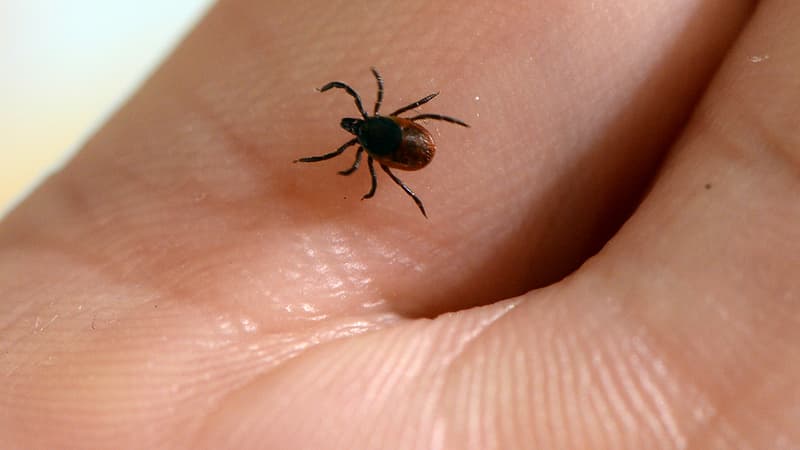Bites, goat cheese… Tick-borne encephalitis is gaining ground in Europe and France, where 71 cases have been reported since 2021, with an expansion of the affected areas, according to a first balance published this Friday by Public Health France (SpF ). .
Given the increase in the incidence of the disease in Europe and the extension of the area and period of circulation of the virus, infections by the tick-borne encephalitis virus have been on the list of notifiable diseases since May 2021.
Damage to the central nervous system
From May 2021 to May 2023, 71 cases were reported (30 in 2021, 36 in 2022, 5 in 2023), indicates the health agency.
The majority were men, the median age was 48 years. But four children, two of whom were under the age of 10, and five people over the age of 65 (age is a more serious factor) were affected.
If the disease has “very low lethality”, it can cause “important sequelae after damage to the central nervous system”, said Alexandra Mailles, from SpF, during a press conference.
At the beginning of the disease, patients suddenly experience fever, headaches, and muscle and joint pain. Then, upon reaching the nervous system, patients can suffer “tremors, behavioral disorders, disturbances of vigilance or consciousness, sometimes seizures or coma,” SpF specifies on its site.
Some of the cases (15%) exercised professions that exposed them particularly, in particular in the breeding of horses/ruminants or in the forests.
Spring to Fall Infections
The virus is transmitted to humans, like Lyme disease, mainly by the bite of an infested tick, mainly from spring to fall (the period of tick activity).
But transmission can pass through infected ruminants, mainly goats, and the virus can be found in raw dairy products. “Contamination can occur from the consumption of raw milk or cheese made mainly from raw goat or sheep milk,” adds SpF.
This type of contamination was observed in June 2020 in Ain. Forty people had been hospitalized after consuming “cheese or goat cheese made with raw milk from the same cheese factory located in Ain.”
Auvergne-Rhône-Alpes, the most affected
“The infections acquired in the territory and identified now are more numerous than those acquired during the trip”, points out SpF (86% against 14%).
“Unexpectedly, the department that reported the most cases during these two years is Haute-Savoie, while the recognition of the virus is much more recent there than in Alsace.”
The Auvergne-Rhône-Alpes region now appears to be an important area for the circulation of the virus, with massifs particularly at risk, such as Forez. The southern Ardèche is also affected.
“We already have the conditions, in a certain number of regions, for transmissions”, underlined Alexandra Mailles.
How to protect yourself from that?
To protect yourself, long clothing is recommended in the woods or in tall grass and vigilance.
Vaccination of travelers to frequently infected areas is recommended. Reduces individual risk of being infected.
In Europe, the most affected countries are the Czech Republic, Germany, the Baltic countries. An extension of the disease to the north and east of Europe is observed.
“With climate change, some countries or regions are becoming more tick-friendly,” according to the SpF expert.
Source: BFM TV


